The Dance Thinker
Issue # 17, March 23, 2012
News
1. How to share longer articles at contemporary-dance.org
Articles
1.COMEDY AND CONTEMPORARY DANCE by MAURICIO FLÓREZ
If you can not view this message correctly, please copy and paste the following link fully in your browser's address bar:
https://www.contemporary-dance.org/The_Dance_Thinker-comedy-and-contemporary-dance.html
1. Remember that contemporary-dance.org has many pages that you can use.
We have:
- A page for contemporary dance announcements in which you can post your news about workshops, auditions, performances, meetings or any current, related items.
- A contemporary dance blog where you can find current information and that will automatically distribute what you post in the announcements page to facebook, twitter and all subscribers to the site’s RSS feed.
- A worldwide contemporary dance directory of schools, companies, scholarships and related websites to which you can also submit your contact information.
- A special page for asking dance questions.
- Several pages in which you can participate with contributions like articles, reviews, questions, comments or even ratings.
- An archive for THE DANCE THINKER back issues, where you can always revisit precedent issues from our e-zine.
- A contact page through which you can address to me directly if you have questions, ideas, wishes, suggestions or comments.
2. It is easy to subscribe to The Dance Thinker. If you know somebody that would profit from receiving our e-zine, just let her/him know about the small subscription form at the right column on every page in the site.
News
1. How to share longer articles at contemporary-dance.org
Sean Hargreaves from the U.K. shared an interesting article with us this month. He was clever enough to make me realize that our submission form for articles is actually small, because it allows entering up to 3000 characters only.
If you wish to publish a longer article, you can also send the content to me directly in a simple word or pdf file, using this e-mail address for the purpose. Please, specify if your work has been already uploaded in the web or not. I will host your file and/or create a page at our section for articles from which visitors will have access to it.
Here’s the link to Sean’s article, in case you want to read it:
Dancing in an Epidemic: The interplay of dance and AIDS in 1980’s America.
And by the way… thanks Sean for making me notice this issue ;-) !
2. There have been really interesting announcements
and posts at our blog this month (calls for dance scholarships, auditions, contests, meetings, a dance marathon and many other things). I would visit the blog or the list of announcements before missing them…
Articles
1.COMEDY AND CONTEMPORARY DANCE by MAURICIO FLÓREZ
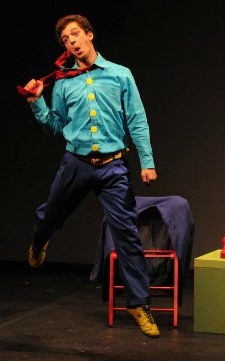
Some months ago, I published an interview with Jessica Walker, a choreographer that makes great emphasis in the fact of not worrying about pleasing the audience.
This month, I came across a virtuous young choreographer, whose main worry is to achieve the satisfaction of the spectators, in order to gain a wider audience for contemporary dance.
I find both positions convincing and it seemed interesting to me to write about the insight of Mauricio Flórez, because this could help revealing the diversity of approaches that make up the working field of contemporary dance.
COMEDY APPLIED TO CONTEMPORARY DANCE is the name of Mauricio Flórez’s graduating project. For this purpose, Mauricio created a dance piece entitled “Fabulación” and wrote a text in which he shares the whole process, both of research and creation.
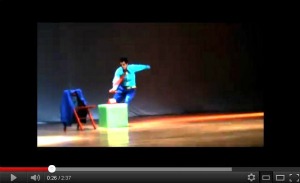
This choreographer feels the need of generating a more inclusive vision of our practice, in which contemporary dance would be communicative, expressive and pleasant for those who do not belong to the profession.
He quotes the Mexican critic Alberto Dallal to support his position:
“While the current society promotes massive participation of people through the cinema, the show, the sports and other aesthetical and non aesthetical activities of a collective character, contemporary dance, even having all the necessary ingredients to accomplish these kind of practices, remains immerse in its elitism, the scenic experimentation and the intellectual whim” (find bibliographic details in the text by M. Flórez)
Mauricio Flórez argues that our audiences do not know the story of contemporary dance, nor the breaches and reasons that lead it to abstraction, symbolic density or intellectualism. Therefore, contemporary dance deals with matters and environments, in a language that is extremely difficult to see and hear.
He continues saying that one way to counteract this situation would be to consider that human beings need to laugh and that there are very few approaches in the world of dance that try to make up tools to bring about comedy through movement.
Therefore, Mauricio Flórez devoted himself to gather means and tools that could be used for that purpose. In the text produced during the research, he shares his conclusions which include a great list of tools that could be useful for any of us who are interested in exploring comedy. Therefore I decided to translate them to share them with you all:
“List of tools to transform dance into a comic language
It is very important to keep in mind that these tools should not be used in an arbitrary way but they should be introduced whether if the piece calls for them or if their use is justified. Otherwise, the effect might be different from laughing, which is the real goal.
1. Clumsiness
2. Irony
3. Repetition (repeating an action or the way to execute it all through he piece; for example: sitting in the same way each time you get to one spot or walking over the same path…)
4. Recurrent topic
5. Mistakes (making them on purpose and letting the audience notice them)
6. Highlighting or stressing everything (like actions, situations and choreographic details)
7. Social status of the character within the situation (playing with the power that status gives, among characters or in relationship to the audience)
8. Fissure of the character (including things that do not belong to the personality of the character)
9. Fissure of the technique (including things that do not belong to the codes of the main technique used in the piece)
10. Intervention of another rhythm or language that does not belong to the poetic of the piece
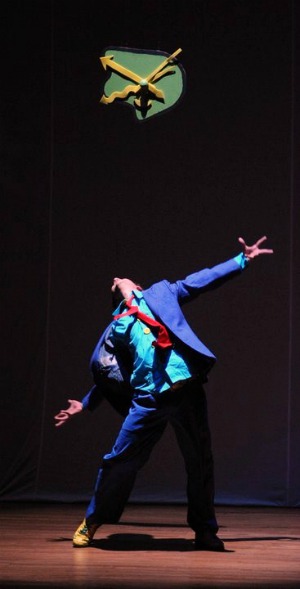 11. Clichés
11. Clichés
12. Perfect relationship between music and movement with specific actions like washing, coughing, falling, etc.
13. Tricks or visual effects
14. Fissuring the scene (going against the language of the scene; for example: in a classical ballet, the apparition of a basketball)
15. Starting from incoherence (starting the action with something that has nothing to do with the topic and lead it afterwards)
16. Triangulation with the audience (from the clown technique: a movement of the head that highlights the action; for example: if my pencil falls, I look at it on the floor, I look at the audience and I look at the pencil again or to another spot that gives force to the action)
17. Opposed and sudden changes of speed
18. Parody
19. Proxemic games between the characters of the piece
20. Imitation
21. Use of isolated parts of the body as the source of movement
22. Gestures and or movements that do not correspond to the moment, situation, action and/or movements
23. Treat serious matters lightly and light matters seriously
24. Over acceptance (exaggerating an action or creating a chain of actions that enlarges it; for example: I see a mouse, I get scared, jump over a chair, run, throw several objects away, climb the leader…)
25. Inversion of roles (a character executes actions that do not belong to her/him conventionally; for example in a classical ballet, the princess lifts the prince or a very old woman that is highly acrobatic…)
26. War of sexes (use of the gender stereotypes; for example: women are the weak sex; men do the hard work; women clean better, men are ready faster…)
27. Slow motion
28. Stop motion
29. Repeat and go beyond an action with challenges (for example: I get to jump over a chair with great effort and a bigger chair appears and after that one another one…)
30. Waiting and silence (nothing happens)
31. Contrast
32. Surprise
33. To make a fool of one self
34. Use of the socially forbidden actions (like taking snots out of your nose, scratching the anus…)
35. Variations of choreographic units (in space or time) which are recognizable for the audience
36. Signs (incomplete actions that will be developed afterwards and therefore understood by the audience
37. Solving of promises within the piece (creating expectative for actions that should happen and do them)
38. Creating imaginary spaces and occupy them (mime type)
39. Clown: get into difficult situations and solve them
40. Development of difficulties (for example: you’re sitting on a chair and your feet do not touch the ground. Instead of moving forward you cut the chair’s legs or put higher shoes…)
41. Everything that reveals that the dancer is human (scratching one self, stumble, sneezing, arranging one’s underwear…)
42. Choreographic question and answer or movement duels
43. Literal movement (mime type; translating actions like running, washing, licking…)
44. Challenges and going beyond them
45. Actor-dancer in troubles
46. Things that are hidden for the dancer but known by the audience
47. Strong manipulation in which you see the subjugation or discomfort of one of the characters
48. Leitmotiv
49. Visual environment and set (use of props and/or sets in absurd ways or to emphasize the comic features of the choreography)
50. Improvising within the structure of the piece according to unexpected things that happen during its performance
51. Gags or lazziz (name for postures, gestures, winks, scenic and word games in the Italian Comedy of Art)
52. Classical clown routines for circus and TV
53. Honesty (not acting, but living and feeling the actions)
54. Different versions of one same scene”
After the list of tools, Mauricio adds a series of related reflections that justify the incorporation of comedy into contemporary dance. Here’s the translation of one of them:
“According to the revised bibliography, it is evident that comedy has been frequently rejected through history. This is because it causes laughing, which is usually considered as light and lacking of theoretical reflection. I believe this is the strongest reason why comedy has not been combined with contemporary dance in our city. Comedy is not recognized as an important search from the intellectual and reflexive perspective.” (p.66)
He also explains that it is very important to contextualize the piece, in order to create a dramaturgy that can be read by the audience. It is over that common environment that the mentioned tools can be applied. Otherwise, the comic effect will not be attained.
I believe Mauricio Flórez has made a contribution here and I hope it reaches some of you who have common interests with him. You can read the whole written text by clicking here, though I warn you that it is in Spanish.
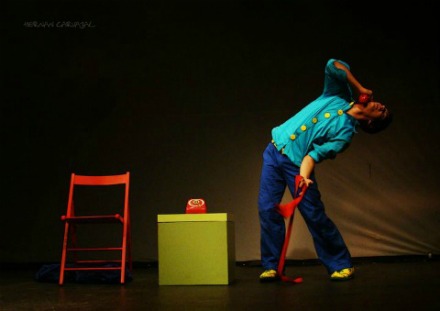
And... if this is not the approach you’re personally interested in, I guess this position will be useful to compare and have a better understanding of what each one of us does.
Mauricio Flórez
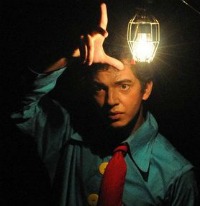 Bachelor of Arts with emphasize in dance (2011). He was educated since a young age as a dancer, with Colombian folkloric dances. He represented his country in international festivals in México (2008) and Peru (2007), performing this dancing genre. Afterwards, he attended high degree studies in dance at the University of Antioquia, where he received education in modern dance, classical ballet and contemporary dance. This last one defines his approach and creative exploration together with theatrical improvisation, which he learnt through workshops with improvisational companies, like “Acción Impro” from Colombia and “Colectivo Mamut” from Chile. He’s also attended studies in clown and masks with teachers from the company “Jogando No Quintal” in São Paulo Brasil.
Bachelor of Arts with emphasize in dance (2011). He was educated since a young age as a dancer, with Colombian folkloric dances. He represented his country in international festivals in México (2008) and Peru (2007), performing this dancing genre. Afterwards, he attended high degree studies in dance at the University of Antioquia, where he received education in modern dance, classical ballet and contemporary dance. This last one defines his approach and creative exploration together with theatrical improvisation, which he learnt through workshops with improvisational companies, like “Acción Impro” from Colombia and “Colectivo Mamut” from Chile. He’s also attended studies in clown and masks with teachers from the company “Jogando No Quintal” in São Paulo Brasil.
If you can not view this message correctly, please copy and paste the following link fully in your browser's address bar:
https://www.contemporary-dance.org/The_Dance_Thinker-comedy-and-contemporary-dance.html
Remember to feel free to answer this e-mail. Let me know what you think. I’m always opened to comments, suggestions, ideas, wishes...
Written by Maria Naranjo.
Editor and Webmaster of contemporary-dance.org
© copyright since 2010 contemporary-dance.org



 11. Clichés
11. Clichés
 Bachelor of Arts with emphasize in dance (2011). He was educated since a young age as a dancer, with Colombian folkloric dances. He represented his country in international festivals in México (2008) and Peru (2007), performing this dancing genre. Afterwards, he attended high degree studies in dance at the University of Antioquia, where he received education in modern dance, classical ballet and contemporary dance. This last one defines his approach and creative exploration together with theatrical improvisation, which he learnt through workshops with improvisational companies, like “Acción Impro” from Colombia and “Colectivo Mamut” from Chile. He’s also attended studies in clown and masks with teachers from the company “Jogando No Quintal” in São Paulo Brasil.
Bachelor of Arts with emphasize in dance (2011). He was educated since a young age as a dancer, with Colombian folkloric dances. He represented his country in international festivals in México (2008) and Peru (2007), performing this dancing genre. Afterwards, he attended high degree studies in dance at the University of Antioquia, where he received education in modern dance, classical ballet and contemporary dance. This last one defines his approach and creative exploration together with theatrical improvisation, which he learnt through workshops with improvisational companies, like “Acción Impro” from Colombia and “Colectivo Mamut” from Chile. He’s also attended studies in clown and masks with teachers from the company “Jogando No Quintal” in São Paulo Brasil.